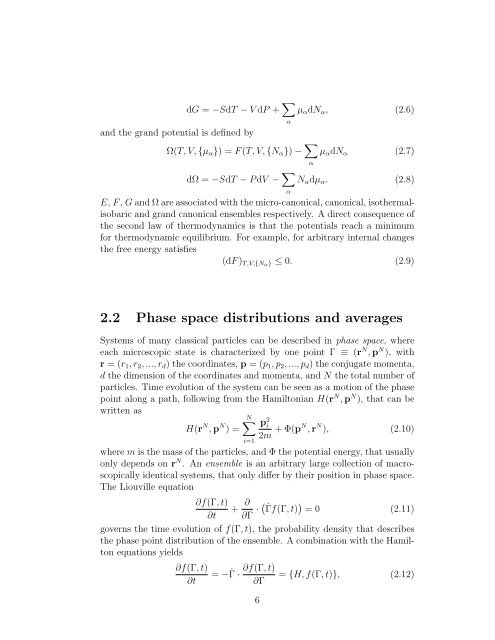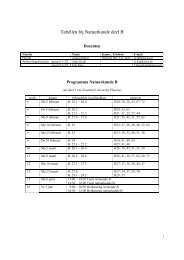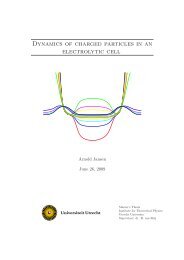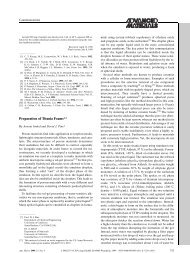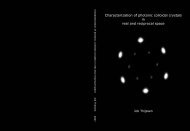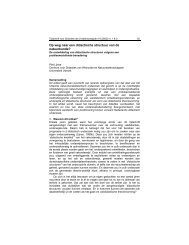Sedimentation Equilibrium of Mixtures of Charged Colloids
Sedimentation Equilibrium of Mixtures of Charged Colloids
Sedimentation Equilibrium of Mixtures of Charged Colloids
Create successful ePaper yourself
Turn your PDF publications into a flip-book with our unique Google optimized e-Paper software.
dG = −SdT − V dP + ∑ αµ α dN α , (2.6)and the grand potential is defined byΩ(T, V, {µ α }) = F (T, V, {N α }) − ∑ αµ α dN α (2.7)dΩ = −SdT − P dV − ∑ αN α dµ α . (2.8)E, F , G and Ω are associated with the micro-canonical, canonical, isothermalisobaricand grand canonical ensembles respectively. A direct consequence <strong>of</strong>the second law <strong>of</strong> thermodynamics is that the potentials reach a minimumfor thermodynamic equilibrium. For example, for arbitrary internal changesthe free energy satisfies(dF ) T,V,{Nα} ≤ 0. (2.9)2.2 Phase space distributions and averagesSystems <strong>of</strong> many classical particles can be described in phase space, whereeach microscopic state is characterized by one point Γ ≡ (r N , p N ), withr = (r 1 , r 2 , ..., r d ) the coordinates, p = (p 1 , p 2 , ..., p d ) the conjugate momenta,d the dimension <strong>of</strong> the coordinates and momenta, and N the total number <strong>of</strong>particles. Time evolution <strong>of</strong> the system can be seen as a motion <strong>of</strong> the phasepoint along a path, following from the Hamiltonian H(r N , p N ), that can bewritten asN∑H(r N , p N p 2 i) =2m + Φ(pN , r N ), (2.10)i=1where m is the mass <strong>of</strong> the particles, and Φ the potential energy, that usuallyonly depends on r N . An ensemble is an arbitrary large collection <strong>of</strong> macroscopicallyidentical systems, that only differ by their position in phase space.The Liouville equation∂f(Γ, t)∂t+ ∂∂Γ · ( ˙Γf(Γ, t))= 0 (2.11)governs the time evolution <strong>of</strong> f(Γ, t), the probability density that describesthe phase point distribution <strong>of</strong> the ensemble. A combination with the Hamiltonequations yields∂f(Γ, t)∂t= − ˙Γ ·∂f(Γ, t)∂Γ6= {H, f(Γ, t)}, (2.12)


